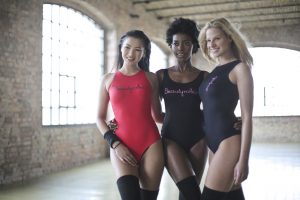There are actually many different types of modelling jobs available and one of the best parts is that you can specialise in many of them. While you may naturally gravitate toward one area, you may be surprised to find that another is a better fit for you.
So, let’s take a look at the different categories out there and how to get modelling jobs based on your physical attributes and interests.

Top models
The most well-known models tend to be the top models, the catwalk models who work for big-name fashion houses.
This is a massively competitive market to find modelling jobs in and is very restricted in terms of looks – the tall, slim physique is what is required.
Commercial models
Commercial models are those who work for high street brands as well as for catalogues and internet companies.
They model clothes to help advertise products as well as for shots on the sales pages for the items.
Requirements for these tend to be more flexible as the clothes are being sold to the general public and it is good if they can relate to the models.

Teen and child models
This is one of those slightly obvious modelling categories! Teens are usually between 12 and 17 years old while child models are those under 12. Both categories are most often seen modelling clothes for their age groups.
Plus size and petite models
These are two categories where you need to be a certain clothes size or under a certain height to qualify.
Plus size models tend to be at least a size 12 and have a curvier shape that can be related to. Petite models are those under 5 foot six inches and can model clothes for people who are also petite.
Other kinds of models
Fitness models are people who are particularly physically fit and can are hired to work on modelling fitness clothes.
Body part models are where you are hired for a specific part of your body, often hands, feet or legs. This can be to model jewellery, footwear and other accessories and only that part of your body is seen.
Finally, glamour models are those who model lingerie in seductive and provocative ways.

Tips to start a career in modelling
Once you have a clear idea of what kind of model you want to be, you can start looking at modelling jobs. But there are a few steps in the middle to help put you in a good place to get considered for these roles.
First, you want to find the right kinds of modelling agencies to pitch yourself. If you are a petite model, there’s no point in going to an agency that deals in catwalk models (unless they are specifying for petite catwalk models).
You should go armed with some great snapshots of yourself, simple and natural photos from a variety of angles but not selfies or anything that has been excessively edited.
You should also be practising the basics while you are trying to get a start in a career in modelling. If you have a polished walk on the catwalk or know how to pose well for photos, you can put yourself ahead of others in the queue.
The best models work with the photographer to create great shots so cultivate ideas on how to do this.

How to get modelling jobs
Getting those first modelling jobs will take some work in the majority of cases. When you read about how to get modelling jobs, one thing is clear – you have to do the legwork. That means being prepared to travel, to work strange hours and have some money to spend on things like makeup artists and stylists to get yourself ready for the interviews.
For example, London is a hub for modelling jobs in the UK, but it isn’t the only place where you can find work. Some of the other big cities will also have opportunities so be prepared to travel where needed.
And you may need to be adaptable about the kind of jobs you take at first – working in a studio one day and being knee-deep in sand on the beach the next.
Flexibility and being able to adapt to whatever comes along is key.
Modelling job options
There are a few ways that models find jobs. There is being an in-house model for a company where you are required to do all of the modelling for their products.
You can also get signed up by an agency who works in your market although this might not be a full-time job immediately. And you can become a self-employed or freelance model where you represent yourself, promote yourself and find your own work.
